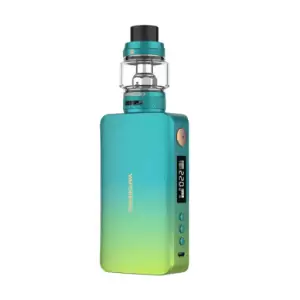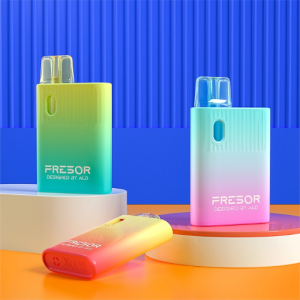Introduction: Navigating the World of Vaping as a Tourist
In recent years, the trend of vaping has seen a remarkable surge across the globe, with disposable vapes emerging as a particularly popular choice among tourists. These devices, known for their convenience and ease of use, have become a staple for travelers seeking a nicotine fix without the hassles of traditional smoking. However, as the popularity of disposable vapes continues to grow, so does the complexity of navigating the diverse legal landscape that governs their use internationally.
For tourists, understanding the local laws and customs related to vaping is paramount. The regulatory environment for disposable vapes varies widely from country to country, with some destinations welcoming vapers with open arms and others imposing strict restrictions or outright bans. This variance can pose a challenge for travelers who vape, making it essential to be well-informed before embarking on international journeys.
Dr. Elizabeth Torres, a public health expert specializing in tobacco control, emphasizes the importance of this awareness: “As vaping becomes more integrated into our global culture, it’s crucial for travelers to educate themselves on the legal and social nuances of vaping in their destination countries. Failing to do so can not only lead to legal complications but also unintentional disrespect towards local customs and traditions.”
This introduction sets the stage for a deeper exploration into the world of disposable vapes for tourists, highlighting the need for vigilance and preparation when vaping internationally. As we delve into the specifics of disposable vape components, the legal landscape, and practical tips for traveling vapers, the goal remains clear: to equip tourists with the knowledge they need to enjoy a hassle-free and respectful vaping experience, wherever their travels may take them.

Understanding Disposable Vapes: Basics for Beginners
Disposable vapes have swiftly become a favorite among both seasoned smokers and newcomers to the vaping scene, thanks to their user-friendly design and portability. But what exactly makes up these convenient devices, and why have they garnered such widespread appeal?
At its core, a disposable vape consists of three main components:
a battery, an atomizer, and a reservoir filled with e-liquid. The battery serves as the power source, activating the atomizer which then heats the e-liquid, transforming it into vapor that the user inhales. Unlike rechargeable vaping devices, disposable vapes are designed for single use. Once the e-liquid is depleted or the battery’s charge runs out, the entire device is disposed of, making them an epitome of convenience for users on the go.
The e-liquid in disposable vapes typically contains a mixture of nicotine, propylene glycol (PG), vegetable glycerin (VG), and flavorings. Nicotine satisfies the user’s cravings, PG and VG create the vapor, and flavorings add a pleasant taste to the experience. This combination, coupled with the ease of use, has made disposable vapes an attractive option for individuals looking to quit smoking traditional cigarettes, as well as for casual users seeking a straightforward alternative to more complex vaping systems.
The appeal of disposable vapes extends beyond their simplicity. Their small size and lack of need for refilling or recharging make them ideal for travel or nights out, fitting seamlessly into the lifestyles of busy individuals and adventurers alike. Moreover, the variety of flavors available caters to a wide range of preferences, further enhancing their popularity.
Dr. Simon Hayes, an expert in addiction research, points out, “The rise of disposable vapes reflects a shift in smoking and nicotine consumption habits. They offer a less harmful alternative to cigarettes, with the added benefits of convenience and flavor variety, making them particularly appealing to a broad demographic.”
Understanding the basics of disposable vapes—from their components to their operation and appeal—provides a foundation for both new and experienced vapers. As we continue to explore the intricacies of vaping internationally, this knowledge becomes crucial in navigating the diverse and often complex regulations surrounding the use of disposable vapes around the globe.
The Legal Landscape: Disposable Vape Regulations Around the Globe
The legal status of disposable vapes varies dramatically across the world, creating a patchwork of regulations that can be perplexing for international travelers. From stringent bans to more lenient policies, the global legal landscape for disposable vapes reflects a wide array of approaches to tobacco harm reduction, public health, and youth protection.
In regions such as North America, the United States has implemented a mixed approach towards vaping. The Food and Drug Administration (FDA) has authority over disposable vapes, focusing on preventing youth access through measures like flavor restrictions. Meanwhile, Canada has adopted a harm reduction strategy, allowing the sale of disposable vapes but with stringent marketing and packaging regulations aimed at minimizing appeal to minors.
Europe presents a somewhat unified front through the Tobacco Products Directive (TPD), which standardizes regulations across European Union member states. The TPD sets limits on nicotine strength, e-liquid volume, and requires health warnings on packaging. However, individual countries within the EU still have the freedom to enact stricter measures, leading to variation in how disposable vapes are regulated from one country to another.
Asia showcases the extremes in vaping regulation. Nations like Singapore and Thailand have outright bans on the sale and use of disposable vapes, citing public health concerns. Conversely, countries such as Japan have adopted a more open stance, allowing the sale of nicotine-containing vapes but under strict regulations.
Oceania’s approach, particularly in Australia, involves a prescription model for nicotine vaping products, including disposable vapes, aiming to balance smoking cessation benefits against the risk of initiating non-smokers.
Dr. Angela Hart, a global public health advocate, emphasizes the importance of these diverse regulatory environments. “Understanding the regulatory landscape for disposable vapes is crucial for public health officials and consumers alike. These laws not only reflect a country’s stance on harm reduction but also influence the behavior of tourists and residents regarding vaping.”
For tourists who vape, navigating this complex legal landscape requires diligent research and preparation. Knowing the regulations of your destination country can help ensure compliance with local laws and avoid potential legal issues. As the global community continues to grapple with the best approaches to regulate vaping, travelers must stay informed about the latest developments in disposable vape laws to ensure a smooth and lawful travel experience.
How to Research Vaping Laws Before Traveling
For tourists who enjoy vaping, particularly those using disposable vapes, staying informed about the legalities in your destination is crucial. Researching vaping laws before traveling ensures not only compliance with local regulations but also a smooth, hassle-free journey. Here are essential tips on how to stay updated on the vaping laws of your intended travel destinations.
Start with Official Government Websites: The most reliable source of information on vaping laws is the official government or public health websites of the country you plan to visit. These sites often provide detailed guidelines on what is allowed and what isn’t, including any specific restrictions on disposable vapes.
Consult Vaping Advocacy Groups: Many countries have vaping advocacy groups that offer up-to-date information on local vaping laws and regulations. These organizations can be a valuable resource for understanding the nuances of local policies and any recent changes that might affect tourists.
Check Travel Forums and Blogs: Travel forums such as TripAdvisor and Lonely Planet, as well as blogs focused on vaping, can offer insights from other travelers’ experiences. These personal accounts can provide practical advice on navigating vaping laws abroad, though it’s important to cross-reference this information for accuracy.
Contact Your Airline: If you’re planning to fly, check with your airline about their policies on carrying disposable vapes. Airlines have specific regulations regarding the transport of electronic cigarettes in carry-on and checked luggage.
Reach Out to Local Vape Shops: For a more localized perspective, consider contacting vape shops in your destination country. Staff at these shops are usually well-informed about the local vaping scene and can offer advice on legal considerations for tourists.
Stay Updated on News: Laws and regulations regarding vaping can change rapidly. Keeping an eye on recent news stories about vaping laws in your destination country can help you stay informed about any significant developments.
Dr. Marcus Levine, a researcher in tobacco control policy, highlights the importance of this research. “With the global landscape of vaping laws constantly evolving, doing your homework before traveling is more important than ever. Being well-informed can prevent unintended legal issues and ensure a more enjoyable travel experience for those who vape.”
By following these tips, tourists can navigate the complex world of international vaping regulations with confidence. Understanding the legal framework surrounding disposable vapes in different countries not only respects local laws but also demonstrates a commitment to responsible vaping practices while exploring the world.
Packing and Traveling with Disposable Vapes: Dos and Dont’s
Traveling with disposable vapes requires careful planning to ensure compliance with airline regulations and international laws. Whether you’re a seasoned vaper or new to the scene, understanding the dos and don’ts of packing and carrying your disposable vapes can help avoid inconvenience or legal issues during your travels. Here are some essential tips to consider:
Do: Check Airline Policies
Before packing, verify your airline’s specific policies regarding disposable vapes. Most airlines allow them in carry-on baggage but not in checked luggage due to battery safety concerns.
Do: Be Aware of Quantity Limits
Some airlines and countries have restrictions on the number of disposable vapes you can bring. Ensure you’re within these limits to avoid issues at security or customs.
Do: Store Them Properly
Keep your disposable vapes in a clear plastic bag for easy inspection during security checks. This also helps prevent accidental activation or leaks.
Don’t: Use Them on the Plane
Using disposable vapes on an airplane is strictly prohibited. Store them safely and wait until you’ve reached a permissible area to vape.
Don’t: Disregard Local Laws
Once you arrive at your destination, respect local vaping laws. Some places may have restrictions on where you can vape, including public areas and hotels.
Do: Dispose of Them Responsibly
Plan for proper disposal of your used disposable vapes. Look for e-waste recycling options to minimize environmental impact.
Don’t: Assume Vaping Is Accepted Everywhere
Cultural attitudes towards vaping vary significantly around the world. Even if it’s legal, vaping might be frowned upon in some cultures. When in doubt, ask or observe local practices.
Dr. Emily Stanton, a travel health expert, emphasizes the importance of preparation: “Traveling with disposable vapes involves more than just packing them in your bag. It’s about understanding and adhering to the regulations and norms of your destination. A little research and preparation can ensure that vaping doesn’t become a stumbling block in your travel experience.”
By following these dos and dont’s, tourists can enjoy a hassle-free journey with their disposable vapes, ensuring that their travel plans go smoothly while respecting the rules and customs of the skies and their destinations.
Respecting Local Culture and Customs: Vaping Etiquette Abroad
When traveling internationally with disposable vapes, it’s essential not only to comply with local laws but also to respect the cultural norms and etiquette around vaping. The acceptance of vaping varies greatly from one country to another, and what’s considered polite in one place might be frowned upon in another. Here are some guidelines to help you navigate the cultural landscape of vaping while abroad.
Do: Research Cultural Attitudes Towards Vaping
Before you travel, take time to understand how the local culture views vaping. In some countries, vaping is widely accepted, while in others, it may be seen as rude or even taboo. Adjust your vaping behavior accordingly to avoid offending locals.
Don’t: Vape in Public Spaces Without Permission
Even if vaping isn’t explicitly banned in public areas, always consider others around you. Look for designated vaping areas or ask for permission before vaping in shared spaces like restaurants, parks, or beaches.
Do: Be Discreet When Vaping
Practice discretion when using your disposable vape in public. Opt for low vapor production settings if available, and avoid vaping in crowded or enclosed spaces where the vapor could be intrusive to others.
Don’t: Leave Your Used Vapes Behind
Be mindful of your environmental impact. Disposable vapes contribute to electronic waste, so it’s important to dispose of them properly. Seek out designated e-waste disposal facilities or take them back home if local recycling options are not available.
Do: Engage with Local Vapers for Insights
If you encounter local vaping communities, engage with them to gain insights into the dos and don’ts of vaping in that area. Local vapers can offer valuable advice on where to vape comfortably and how to do so respectfully.
Don’t: Assume Indoor Vaping Is Permitted
In many places, vaping indoors is subject to the same restrictions as smoking. Always check if indoor vaping is allowed in places like hotels, bars, and public buildings to avoid fines or causing discomfort to others.
Dr. Susan Choi, a cultural anthropologist specializing in global vaping trends, highlights the importance of cultural sensitivity: “Vaping, like any social behavior, is embedded within a cultural context. Travelers should strive to understand and respect these contexts as part of their global vaping etiquette. Doing so not only ensures a more pleasant experience for themselves but also for the communities they visit.”
By adhering to these guidelines, tourists can ensure that their vaping habits align with local customs and cultural expectations, fostering a respectful and enjoyable travel experience for everyone involved.

Future Trends: How International Vaping Laws Might Change
As the global conversation around vaping continues to evolve, so too will the regulations governing the use of disposable vapes. Changes in public health data, technological advancements, and shifts in societal attitudes are likely to influence how countries approach vaping legislation in the future. Here, we explore potential trends and predictions in international vaping laws and how they could impact travelers who vape.
Increased Harmonization of Vaping Regulations: With the vaping industry expanding globally, there’s a growing need for international standards to ensure product safety and quality. We may see efforts to harmonize vaping regulations, particularly in regions with shared economic and political ties, to facilitate cross-border trade and protect consumers.
Stricter Controls on Youth Access: Concerns over youth vaping are prompting countries to implement stricter measures to prevent underage access to disposable vapes. This could include enhanced age verification processes, both in retail settings and online, as well as restrictions on marketing practices that appeal to younger audiences.
Focus on Environmental Sustainability: The environmental impact of disposable vapes is becoming an increasingly pressing issue. Future regulations may require manufacturers to adopt more sustainable practices, such as developing biodegradable or recyclable components, or implementing take-back programs to reduce e-waste.
Adaptation to Technological Innovations: As vaping technology advances, regulations will need to adapt to address new products and consumption methods. This could involve updating standards for e-liquid ingredients, device safety features, and emissions to ensure that new vaping products meet health and safety benchmarks.
Expansion of Vaping as a Smoking Cessation Tool: Recognizing the potential role of vaping in harm reduction, more countries might adopt policies that promote disposable vapes as alternatives to smoking. This could include allowing the marketing of vaping products as less harmful options within regulated frameworks, similar to approaches taken by countries like the UK.
Dr. Lucas Bennett, a public health researcher focusing on tobacco control, comments on the future of vaping regulations: “The landscape of vaping laws is at a critical juncture. As we learn more about the risks and benefits of vaping, especially in comparison to smoking, it’s crucial that regulations evolve in a way that maximizes public health benefits while minimizing harms. This includes considering the role of disposable vapes in smoking cessation and addressing the environmental concerns associated with these products.”
For international travelers who vape, staying informed about these potential changes is vital. As countries adjust their vaping laws, tourists will need to adapt their behaviors to comply with new regulations, ensuring that their vaping practices remain respectful and legal across borders.
FAQs: Common Questions About Disposable Vapes
As travelers venture into new territories with their disposable vapes, they often encounter a range of questions regarding the use, legality, and etiquette of vaping internationally. This section aims to address these queries, providing clear and concise answers to help tourists navigate the complexities of vaping laws around the world.
Q1: Can I bring disposable vapes on an airplane?
A: Yes, most airlines allow passengers to carry disposable vapes in their carry-on luggage. However, using them on the plane is strictly prohibited. It’s advisable to check the specific airline’s policy beforehand as regulations can vary.
Q2: How do I find out if disposable vapes are legal in my destination country?
A: Research is key. Consult official government websites, contact local embassies, or look for information from reputable vaping advocacy groups. Staying updated with the latest laws and regulations is crucial for a hassle-free travel experience.
Q3: Are there countries where disposable vapes are entirely banned?
A: Yes, several countries have implemented complete bans on the sale and use of disposable vapes. Notably, countries like Thailand, Singapore, and Brazil enforce strict prohibitions, with penalties for violations.
Q4: What should I do if disposable vapes are not allowed in my destination?
A: If disposable vapes are banned in your destination, it’s best to respect the local laws and leave your devices at home. Consider alternative nicotine replacement therapies if you’re using them as part of a smoking cessation plan.
Q5: How can I respectfully vape in countries with strict public vaping restrictions?
A: Discretion is key. Look for designated vaping areas or vape privately. Always respect local customs and norms, and when in doubt, ask for permission or guidance from locals.
Q6: What are the penalties for violating vaping laws abroad?
A: Penalties can range from fines to confiscation of your vaping device, and in extreme cases, legal action. The severity of penalties varies by country, underscoring the importance of understanding and adhering to local laws.
Q7: Can I dispose of used disposable vapes while traveling?
A: Proper disposal is important to minimize environmental impact. Look for e-waste recycling bins or take them back home for responsible disposal. Avoid littering to respect the environment of the places you visit.






